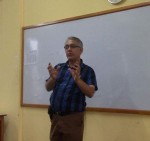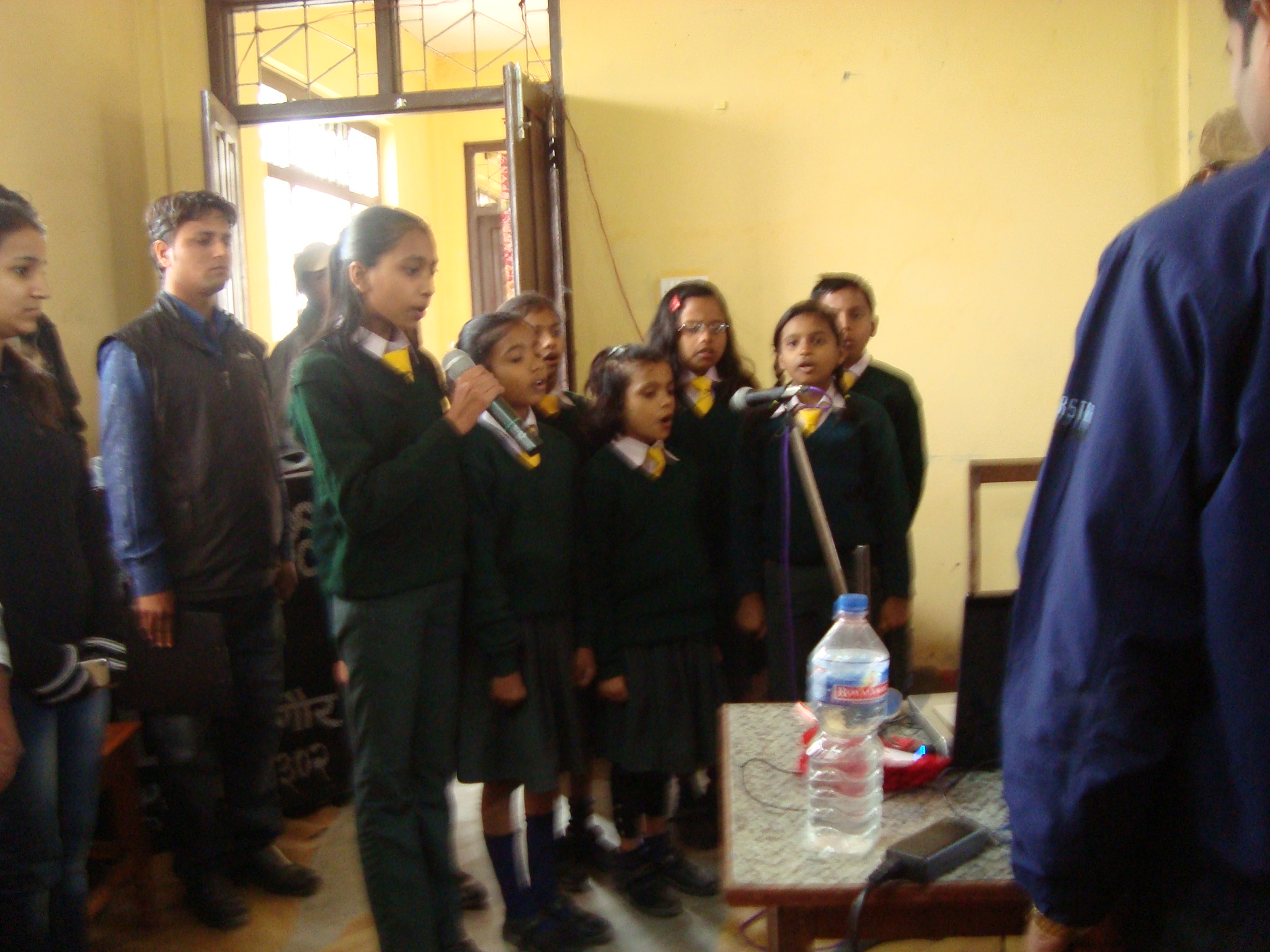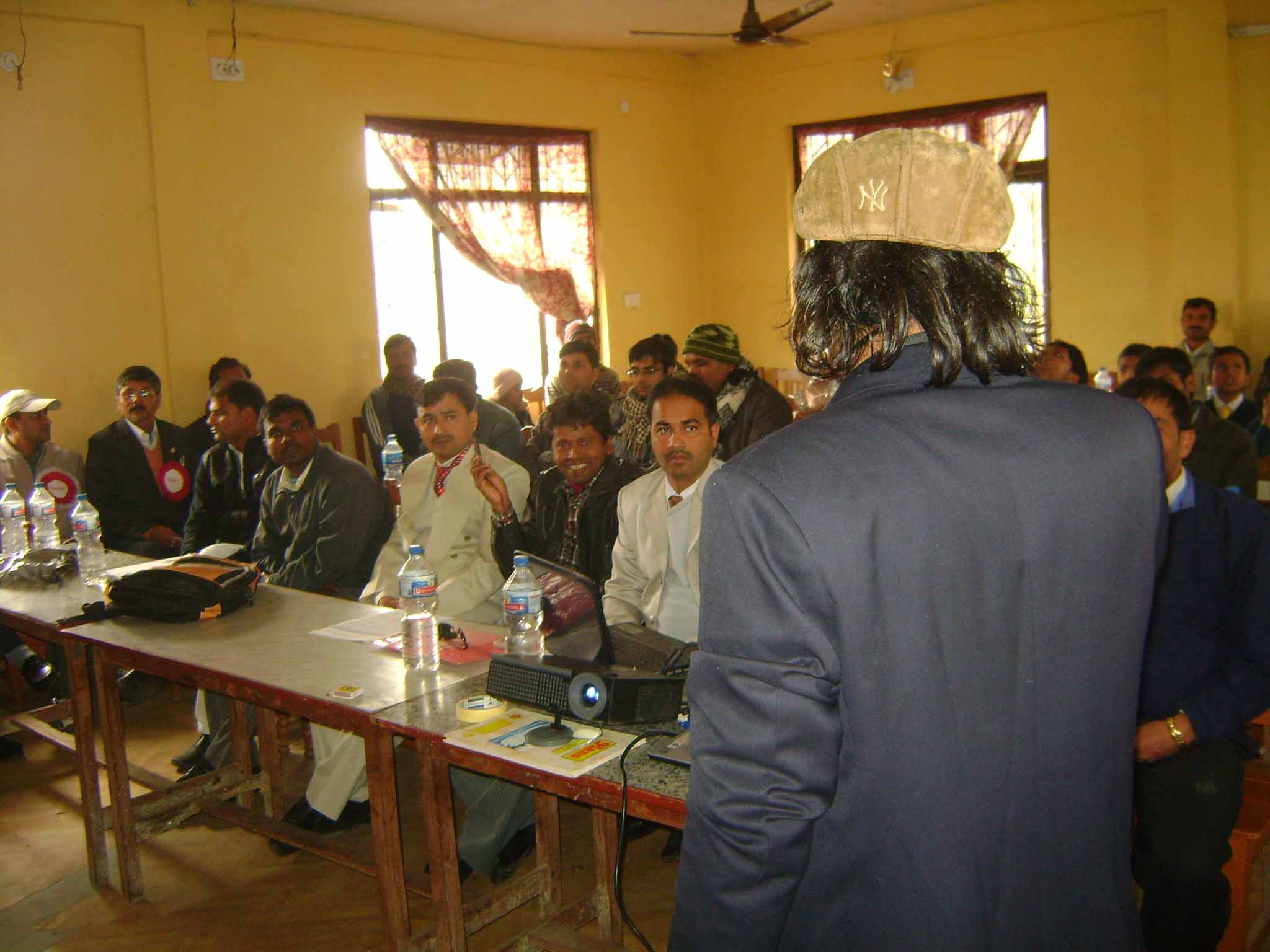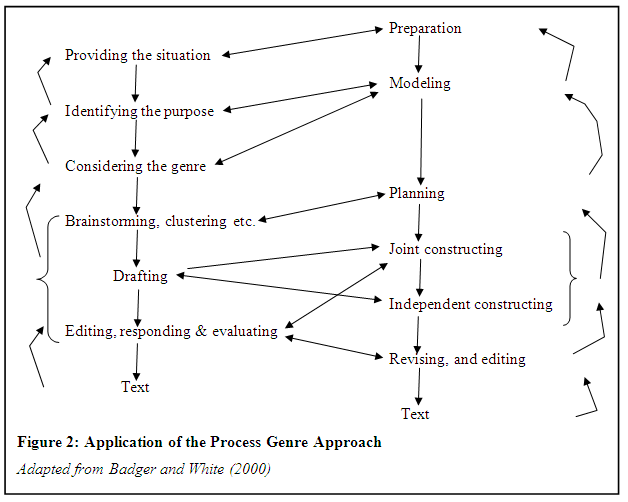Lekhnath S Pathak
Tribhuvan University/QUEST-Nepal
Introduction In a previous entry that I contributed to this blog (where I am delighted to see many responses from readers since it was published two years ago), I had focused on Quality Circles within the context of ELT. This entry deals with how tools and techniques as used in Quality Circle may also be used in various aspects and stages of life. If you are wondering why the larger issues of life matters to us as English teachers, the simple answer to that is that enhanced motivation, productivity, and satisfaction in life outside shape and influence students’ learning and success in school. So, let’s see the implications and application of QC in life at large.
From Industry to Education
The concept of Quality Circle originally extended from the industry in which the focus was on the enhancement of the quality of the products in the industry to the educational institutions in which the focus is on the enhancement of the quality of the human resource. Japan, an emerging super power during Second World War which could destroy one of the strongest frontiers of the USA, Pearl Harbor, got a severe jolt when America destroyed its two big cities of Hiroshima and Nagasaki. The subsequent years saw the depression among Japanese and it took them over a decade to get back to its feet. From military, Japan began to focus on economy. But the Japanese products around that time were very poor and didn’t have world market. So, one of the things that the Japanese did in order to come out of that desperate situation was to invite a brilliant American scholar named Dr. W. Edwards Deming, who, in his famous lectures “urged managers, engineers and scientists to adopt 14-point principle which called for everyone to look at quality management from different perspective which we today know as Total Quality Management” (Chapagain, 2006:137)
It is this adoption of TQM that revolutionized the Japanese industry and we saw the emergence of Japan as a leading economy in the world market. Many educational leaders around the world then adopted and adapted concepts of TQM to enhance teaching and learning. Prof. Dinesh Chapagain has been its harbinger in Nepal, who introduced it into Nepali academia in 1999. Since then it has been growing rapidly in the schools across Nepal through QUEST (Quality Circles in Education for Students’ Personality Development) –Nepal established in 2006
Slowly, in the development of SQC movement, a further possibility of extending the concept to different stages of life is also being explored. The concept seems to have tremendous possibilities. Let’s try to explore whether this concept can be made to work to make our life better managed and more qualitative.
The four stages of life
If we apply the four stages of life – brahmacharya, grihastha, sanyasa and banaprastha– as outlined in Hindu philosophy, in our life, which seems to have a universality, it can be broadly discussed in the following ways. It is in these four divisions that the possibility of applying quality circles is explored in this essay.
1. Brahmacharya ashram:The Life of Preparation
Brahmacharya means celibacy, or a stage meant for preparing oneself for intellectual life, abstaining from any other attractions of society. In our case, a student’s entire academic life from day care to post graduate degree may be considered to constitute this stage.
At this backdrop, we have initiated Students’ Quality Circles (SQC) in Nepal and other parts of the world where this approach is applied at the school level among the students in the age group roughly 8-18 years. In our case, so far, we have started as early as with grade five students to grade nine students, with some higher grade students also undertaking the case studies and now attempts are also being made with lower grade students as well.
The main focus of SQC has been on human resource development, by teaching students to solve their own problems, be it at home or in the school. “That the problem gets solved is only a by-product of this approach, the end product is the evolution of a child into a complete human being” (Pathak, 2009). This is what we have started to call in the field of SQC as TQP, Total Quality Person.
In this approach, likeminded students form a circle of 4-10 students, who identify the problems that they are facing either at home or in the school, by brainstorming. Once the problems have been listed, they are prioritized in order of importance by collecting data from around the school and narrowed down to ultimately on one problem. The main causes and root causes are identified using Ishikawa (also called cause-and-effect or fish-bone) diagram. Countermeasures are planned after identifying the causes and implemented and monitored using control chart and the result compared after certain period as planned before. If the problem has been solved, another cycle is started otherwise further future plans are made to eliminate the problem completely.
The kinds of problems that the students take up are like bullying, use of filthy language in the school, excessive TV watching, exam phobia, dirty school premises and so on. They are taught to start with their own problem only which can be solved by their own initiative. For example, they are not encouraged to work on problems like too much theoretical classes or strict teachers, unless they can solve the problems on their own.
The children learn the steps of problem identification, analysis and solving. Use of basic Quality Control tools is what the children began to work with. Using check sheet to collect data, plotting and organizing data using line graph,bar graph and pie-chart, using Pareto diagram to prioritize the problems, fish bone diagram to systematically summarize the relationships between problem characteristics (the effect) and their causes, control chart at the solution implementation level to check whether a method adopted for an activity or a process is within control or not, scattered diagram to check for correlation between the sets of data. It is the ability to play with these tools in problem solving that makes children smart and infuses in them the skill of scientific problem solving attitude. The ability to use these tools also prepares them for higher order professional skills.
Brainstorming for ideas at different stages of problem solving, adoption of PDCA (Plan, Do, Check, Act) cycle as suggested by Deming to continuously improve the situation, the use of 5W1H questions at the level of implementation plan are basic to Students’ Quality Circles.
SQC movement that is spreading in schools in indifferent parts of the word is preparing students with scientific problem solving mind set and thus is making them GOOD and SMART so that they can embark on the second stage of life as adults more successfully and meaningfully.
2. Grihastha Ashram: The Life of Settlement
This is the most active and most meaningful stage of one’s life: when an individual marries, settles down in life, has children and has taken up a job or started one’s own enterprise to be able to live the life well. The stage can fall roughly between the age of 25 and 50. In our case upto around 60 years (58 years is the retirement age for bureaucrats and 63 for teachers). If this stage has not been managed well, life becomes a complete waste. This is the stage of family and profession (which is to sustain the family). It can be called the age of Responsibility, in which one is to take upon the responsibility of the family: spouse and children and also of parents; the responsibility in the workplace, no matter what kind of job or profession one holds; the responsibility towards oneself for one’s own growth.
At this stage, one will have to manage home and work well. Both are complementary to each other. Therefore, a balance of professional and personal life is necessary. It is here that the adoption of Quality Circle to suit the situation might come handy.
Quality Circle at home
The domestic problems at home need very sensible handling so that the problems are solved without blaming anyone at home and maintaining the family harmony. The problems that can occur at home can be sibling rivalry, too much demand in children from the parents to perform better, parent dependent children, eating habits of children, too much of TV watching by children, paying less attention to the studies, children wasting food, eating junk food rather than home cooked food and so on.
Forming a circle at home: The circle can be formed consisting of both the parents or parents and grandparents depending on their relationship and presence and among the children. Or, the entire family can form one circle since the problem relates to everybody at home, every member can become involved in problem solving. This will also increase understanding and bond in the family. The most assertive member, be it the father or the mother can become the leader of the circle to ensure implementation of the solution. It will not require presentation at the end but final evaluation and further steps will be useful.
The same tools, techniques, and steps would be applicable.
Quality Circles in work places
Quality Circles, actually, started from the work places. When Ishikawa introduced it in Japan, it was in the work place only – in the industries, where the workers and supervisors worked on improving the quality of the goods produced.
What kind of Quality Circles can we have in work places? It depends on the profession we are in. So we can have Teachers Quality Circle, Principals Quality Circle, Managers Quality Circle, likewise circles for doctors, nurses, engineers, journalists, cooks, police, army, traffic, clerks, politicians and so on.
Each of these works and professions will have their own kind of problems. Teachers may have the problem of how to make the class more effective, how to relate more effectively with the students and management. Principals may have the problem of how to mobilize and make the best use of the resources, how to keep the teachers and students happy, how to get the most of their efforts. Grihastha Ashram is the most active and productive stage of one’s life. It is managing this stage more effectively that ensures the future of oneself and one’s progeny. The tools and techniques of Quality Circles can be easily modified to suit any of the profession. The circles can be formed based on the size and sections of the profession.
3. Sanyasa Ashram: The Life of Retirement
This is the stage of Retirement. This stage can last after your retirement till you can lead an active life. Let’s say this could mean 60 to 75 years. This leaves us with more than half a decade of active life even after retirement. This is the stage when we are done with the responsibility towards family and work place. The children by now are mostly grown up and settled. And one is free with one’s life. This stage can be managed well by making voluntary contributions to the society, to improve the situation in and around.
In this context, it is pertinent to recall the Senior Quality Circle initiated by Prof. Richard Ennals of Kingston University, UK. In the paper, he presented in the 13th International Convention of Students’ Quality Circle, in Kathmandu in 2010, he writes:
We argue the case for a new structure towards the end of working life, as older workers, including teachers, prepare for the transition to life outside work, or after work. Older workers accumulate experience, skill and tacit knowledge, which may be lost to the education system when they retire. Senior Quality Circles could have an important role in intergenerational learning. Furthermore, they provide a filter and translation facility between the technologically driven world of younger generations, and the human-centred concerns of older generations, whose lives could indeed be eased by the appropriate use of technologies to assist living (Ennals:2010)
This stage can be used to fulfill the realization of one’s dreams of making some substantial contribution towards society. Prof. Ennals’ experiment was with the senior faculty of the university as to how they can contribute to the society as senior citizens. Senior citizens and retired people, specially, the ones who retire from quite influential positions, they can make tremendous contribution to the society.
4. Banaprastha Ashram: The Life of Departure
Literally, banaprasthameans ‘towards forest’. Here, ‘forest’ is a metaphor for ‘the unknown’ into which we disappear after life. Hinduism talks about mokshya which means ‘liberation’. This liberation is, liberation from life. Buddhism talks about nirvana, which translates as ‘extingushing’. Both mokshyaand nirvana refer to the point of exit from the world. How does Quality Circle help in this stage? In many cultures, there are old age homes for old people, whereas in many they are at the mercy of their children or government.Like-minded old people like to sit together and ruminate about the ‘good old days’ or deliberate on spiritual matters, especially in the East. There is also a concept of Satsang which means ‘good company’ in which the spiritual aspects and moral and ethical ways of life are deliberated upon. There is also the concept of going for tirthatan, that is, pilgrimage, visiting holy places. The idea of Quality Circle is related with intervention but it also works very well in this stage of banaprastha, because it can be used for self-management of the old age. The tools to be used for this stage may not necessarily be all the tools used in the previous three stages where all the tools are used.
Conclusion
The epoch-making concept that started with Deming’s Statistical Quality Control (also SQC) got extended to Quality Control Circle by Ishikawa. This translated into Students’ Quality Control Circle as an innovation by Jagdish Gandhi in academic circle and finally only as Students’ Quality Circle as visualized by Nepal’s SQC movement by Prof. Chapagain with the concept that unlike machine made products, human potentials are unlimited.So the human promises and potential for growth need not be controlled, has seen a continuous improvement or Kaizen as inherent in the concept of Quality Circle. As discussed above the concept of Quality Circle does not only make each stage of life more manageable but also helps, as pointed by Prof. Ennals, in making transition from one stage to the next. This might usher in a new approach to life which is based on time tested and proven scientific ways of problem solving. Let’s give this possibility a chance.
References
Chapagain, Dinesh P. (2006). Guide to Students’ Quality Circles: An Approach to Prepare Total Quality People. NQPCN: Kathmandu
Ennals, Richard (2010). Creating Collaborative Advantage: Students’ Quality Circles. A paper presented in the 13th ICSQC 2010, Nepal.
Pathak, Lekhnath S. (2009). Evolution of a Child into a Complete Human Being. In The Convention Handbook of 5th National Convention of Students’ Quality Circle 2009. QUEST-Nepal: Kathmandu
Pathak, Lekhnath S. (2009) Guniya Chakrako Sambhavana (Possibility of Quality Circle). Kantipur National Daily, November 27, 2009. Kantipur Publications: Kathmandu
Pathak, Lekhnath S. (2010). Students’ Quality Circle for Language Development. A NELTA Monthly Talk Series in British Council, Nepal on May 15, 2010
Pathak, Lekhnath S. (2010). SMART and GOOD: What does it mean? In The Convention Handbook of 13th International Convention of Students’ Quality Circle 2010. QUEST-Nepal: Kathmandu
Pathak, Lekhnath S. (2011). Shaping the Minds of Young Children through SQC. In The Convention Handbook of 7th National Convention of Students’ Quality Circle 2011. QUEST-Nepal: Kathmandu
About the author
Like this:
Like Loading...




